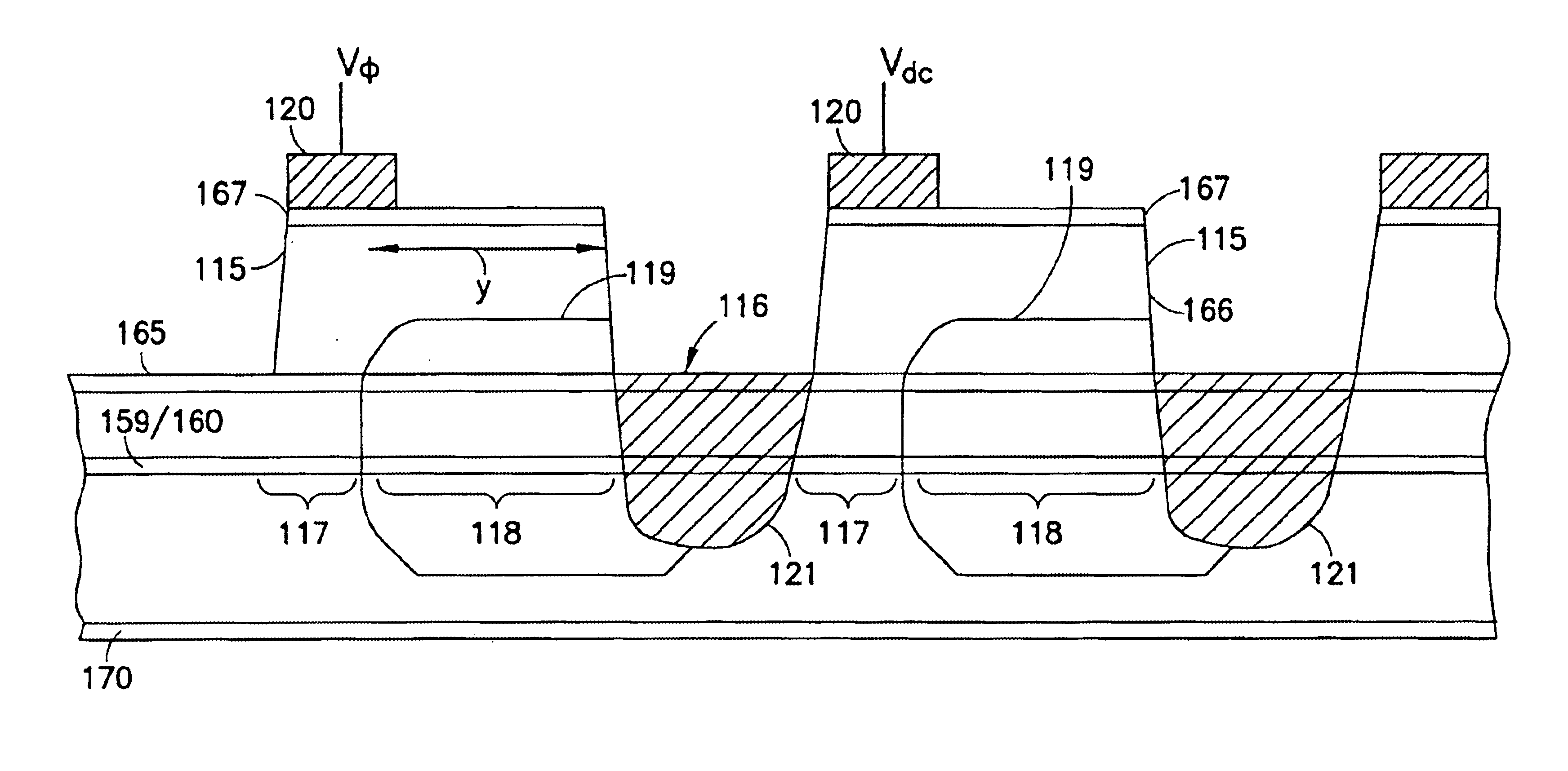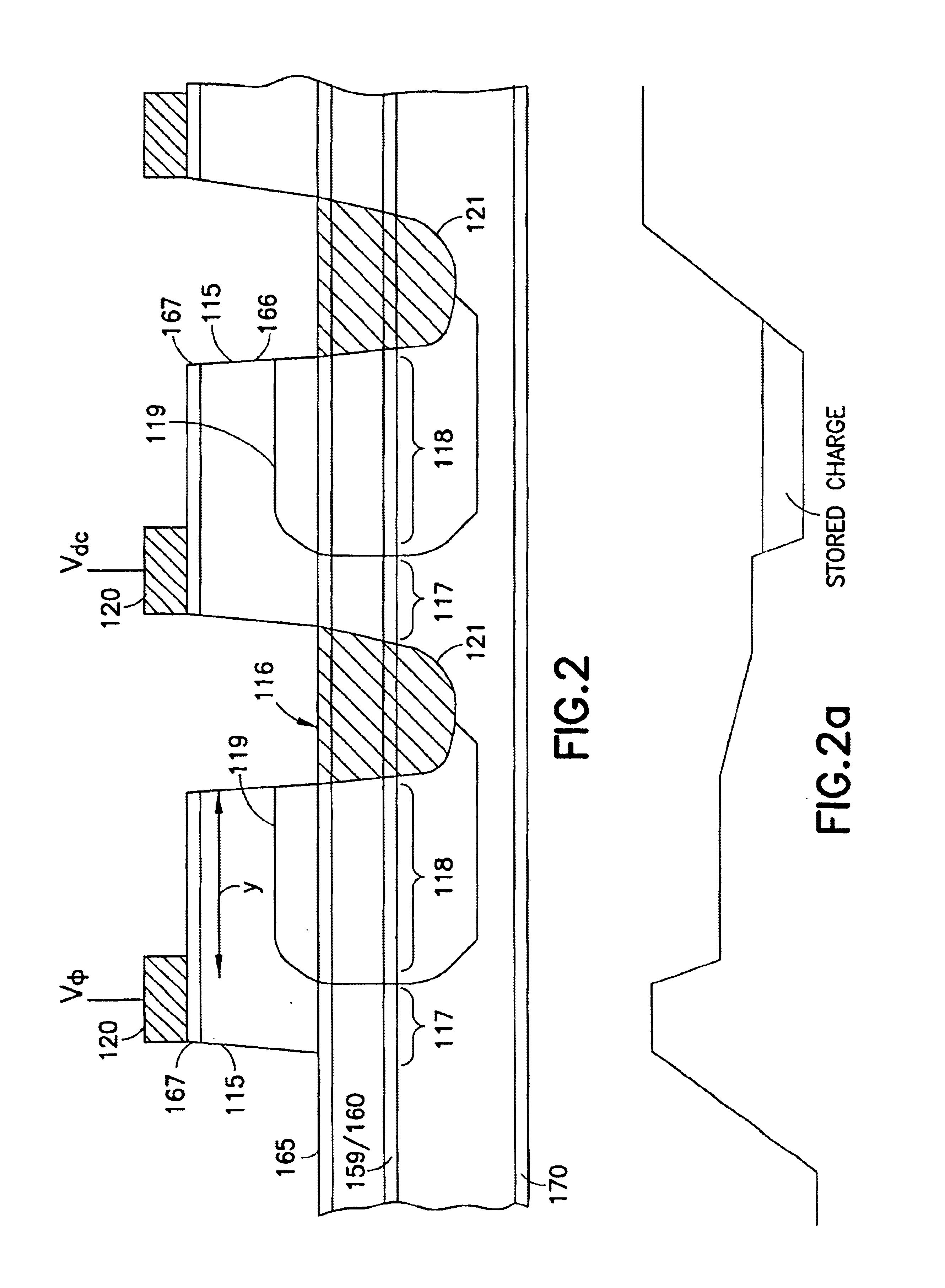III-V charge coupled device suitable for visible, near and far infra-red detection
a charge coupled, near-infra-red detection technology, applied in the direction of radiation control devices, solid-state devices, semiconductor devices, etc., can solve the problems of gate oxide sensitivity and other ways, limited si technology, gate oxide sensitivity to radiation flux, etc., to facilitate charge transfer, optimize drift velocity, and high field
- Summary
- Abstract
- Description
- Claims
- Application Information
AI Technical Summary
Benefits of technology
Problems solved by technology
Method used
Image
Examples
Embodiment Construction
n showing all of the significant current flows from the contacts and into and out of the well.
[0021]FIG. 4 is a schematic drawing of the last pixel element in the CCD and its connection by way of a separate clocked output gate to the output differential amplifier by way of a floating diffusion node which is reset each clock cycle. For the active pixel architecture, Vφ is the single pixel element connected to the output amplifier stage.
DESCRIPTION OF THE PREFERRED EMBODIMENTS
[0022]FIG. 1 shows the epitaxial layer structure corresponding to the preferred embodiment and from which the CCD, the active pixel and the HFET (heterostructure field effect transistor) can be made. The layer structure starts from a semi-insulating GaAs substrate 100 and grows a DBR (distributed Bragg reflector) mirror stack of 1-3 pairs of ¼ wavelength mirror using combinations of GaAs as layer 152 and AlAs as layers 151 which are subsequently oxidized to produce layers of AlxOy positioned between layers of GaA...
PUM
 Login to View More
Login to View More Abstract
Description
Claims
Application Information
 Login to View More
Login to View More - R&D
- Intellectual Property
- Life Sciences
- Materials
- Tech Scout
- Unparalleled Data Quality
- Higher Quality Content
- 60% Fewer Hallucinations
Browse by: Latest US Patents, China's latest patents, Technical Efficacy Thesaurus, Application Domain, Technology Topic, Popular Technical Reports.
© 2025 PatSnap. All rights reserved.Legal|Privacy policy|Modern Slavery Act Transparency Statement|Sitemap|About US| Contact US: help@patsnap.com



